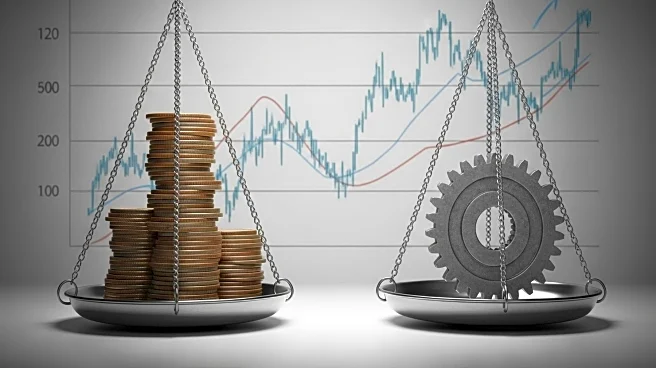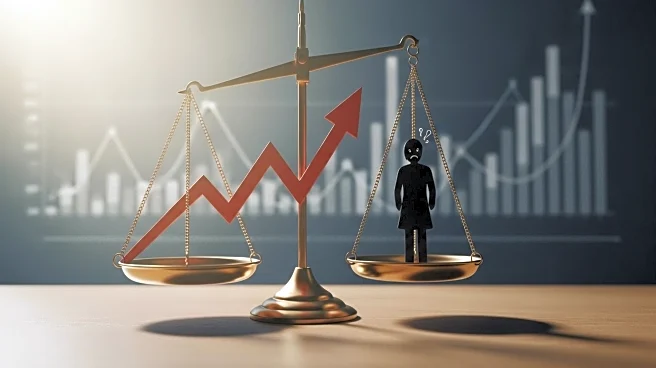What's Happening?
Inflation has increased since President Trump announced new import tariffs in April, affecting various consumer goods such as coffee, toys, and televisions. The Consumer Price Index (CPI) data indicates a 2.9% rise in overall prices in August compared to the previous year, marking a departure from the Federal Reserve's 2% target. Core inflation, excluding food and energy prices, rose 0.4% in August, the largest monthly gain since January, and is up 3.1% from a year earlier. The Federal Reserve Bank of San Francisco notes that tariffs have a significant impact on prices, with bananas, for example, seeing a 4.9% price increase from April to August due to a 10% tariff on imports from Central and South America.
Why It's Important?
The tariffs imposed by President Trump have led to increased costs for consumers, affecting household spending and contributing to inflationary pressures. With an average tariff rate of 17.4%, the highest since 1935, American households are estimated to incur an additional $2,300 in costs in 2025. This situation poses challenges for the Federal Reserve in managing inflation and maintaining economic stability. Industries reliant on imports, such as toys and televisions, face higher production costs, potentially leading to reduced consumer demand and impacting business profitability.
What's Next?
As tariffs continue to affect prices, businesses may need to adjust their strategies to mitigate costs, potentially leading to changes in supply chains or sourcing. Consumers might seek alternatives or reduce spending on affected goods, influencing market dynamics. The Federal Reserve may consider policy adjustments to address inflationary pressures, while political leaders could face calls to reassess tariff policies to balance economic impacts.
Beyond the Headlines
The tariff-induced price increases highlight broader economic implications, including potential shifts in consumer behavior and business strategies. Ethical considerations arise regarding the impact on low-income households disproportionately affected by rising costs. Long-term, these developments could influence trade relations and economic policies, prompting discussions on the balance between protectionism and global trade.











